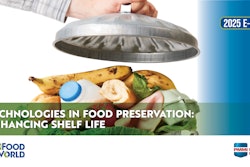The U.S. Food and Drug Administration plans to phase out petroleum-based synthetic dyes in the U.S. food supply because of health concerns, according to an FDA notice.
“Today, the FDA is asking food companies to substitute petrochemical dyes with natural ingredients for American children as they already do in Europe and Canada,” says FDA Commissioner Marty Makary. “Given the growing concerns of doctors and parents about the potential role of petroleum-based food dyes, we should not be taking risks and do everything possible to safeguard the health of our children.”
The dyes are commonly found in candy, cereals, and beverages. Companies use the dyes to brighten the color of food and drinks to make them look more appetizing.
Six dyes—FD&C Green No. 3, FD&C Red No. 40, FD&C Yellow No. 5, FD&C Yellow No. 6, FD&C Blue No. 1, and FD&C Blue No. 2—are set to be removed by the end of the year, the FDA says. It notes that this is sooner than the original 2027-2028 deadline previously required. The FDA also says that petroleum-based dyes will be replaced with natural color additives.
In a May 9 announcement, the FDA shares that three new natural dyes have been approved to date. Galdieria extract, butterfly pea flower extract, and calcium phosphate are authorized for a range of food and beverage uses. The dyes can be used for various shades of blue, green, purple, and white.
Health effects of food dyes
The health risks of the dyes remain uncertain, according to CNN. Research shows some potential side effects can be as mild as irritability, restlessness, and sleep disturbances, or as extreme as causing an increased risk for cancer and tumors.
Of the dyes slated for removal, Red No. 40, Yellow No. 5, and Yellow No. 6 have been found to be contaminated with benzidine or other carcinogens, says the National Library of Medicine.






















